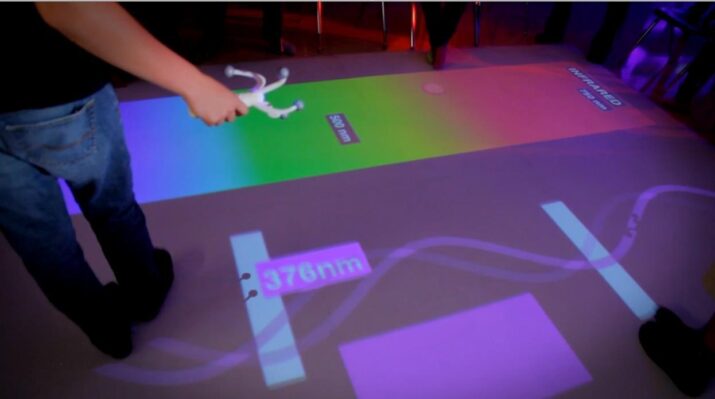Bridging the Wealth Gap with EdTech
Topics

Educators often take advantage of educational technologies as they make the shifts in instruction, teacher roles, and learning experiences that next gen learning requires. Technology should not lead the design of learning, but when educators use it to personalize and enrich learning, it has the potential to accelerate mastery of critical content and skills by all students.
A SMALLab Q&A with Philip Martell, Superintendent of Connellsville Area School District
SMALLab Learning CEO, Dr. David Birchfield, sits down with Philip Martell, Superintendent of Connellsville Area School District to discuss the challenges of driving student outcomes in a poorly-funded district and the opportunity created by deploying embodied learning technologies.
In the third article of a four-part series, SMALLab Learning CEO, Dr. David Birchfield, sits down with Philip Martell, Superintendent of Connellsville Area School District. They discuss the challenges of driving student outcomes in a poorly-funded district, and the opportunity created by deploying embodied learning technologies such as SMALLab. They describe the impact that using SMALLab has on faculty, students, and parents alike.
SMALLab is a learning company that partners with educators to transform learning. SMALLab is a room-sized, 3D collaborative learning environment. When students are learning in SMALLab they are out of their seats, moving around and working together to understand the lesson. Multiple research studies show that SMALLab yields an 86 percent increase in student learning, 6.7X increase in student collaboration, and a 33 percent increase in teacher effectiveness. Learn more about SMALLab on its NGLC grantee page or at the SMALLab site.
Dr. Birchfield: You are a financial professional by trade. Tell me how the career trajectory of a CFO led you to become the Superintendent of the Connellsville Area School District.
Martell: My association with Connellsville Area School District actually began in my capacity as a CFO. For several years, the school district was teetering on the brink of bankruptcy. Its situation really goes all the way back to the decline of the mines in the 1980s. We have high unemployment because of how many jobs disappeared. The number of students in the district declined as well. Today, we’re roughly half the size that we were 15 years ago.
Changes like that require tough decisions—decisions that didn’t always take place here. The district kept borrowing when what it really needed was to “right size” itself. It was in that environment that the School Board brought me in, and after I got the district’s financial house in order, the Board asked me to stay on as Superintendent.
Dr. Birchfield: Tell me about the students in the school district. What’s the typical background look like?
Martell: We have a lot of deep-running socioeconomic challenges here, but I always say poverty is poverty. It exists in wealthy districts and in poor districts. Connellsville is no different.
Dr. Birchfield: But with fewer resources compared to wealthier districts, how does Connellsville maximize student outcomes?
Martell: Part of my proposal to the School Board was to make new investments in new technologies. We’ve reallocated our limited resources toward high-quality educational programs and initiatives—like the SMALLab—that can be used throughout the curriculum and across grade levels.
But going back to your question, it’s about the outcomes, not the technologies themselves. In the past, there was very little accountability to determine if a particular investment truly lived up to its promises. That’s what the Board really wanted—accountability—and I’ve given that to them, along with my vision of the next three years. We’re delivering improvements. We’re holding ourselves accountable to that.
Dr. Birchfield: Where does SMALLab fit into your vision?
Martell: We’ve invested in a lot of technology. We have a new media center, a cyber platform, and two fully-functional fabrication labs. But we have five SMALLabs, and of all of our initiatives, our SMALLabs are having the biggest success. Not only have the teachers gravitated toward it, but the students have as well. We work hard so we can reach every single student with SMALLab.
Dr. Birchfield: What do teachers say they like the most about using the SMALLabs?
Martell: The ease of use is a big plus. It’s what ensures that teachers turn to the SMALLab as much as possible. They want to make sure they know about every SMALLab scenario that exists so that we have full integration across the curriculum. When you hear things like that, you know this investment is going to flourish.
Dr. Birchfield:And how about the students? What do they say about the SMALLabs?
Martell: It’s not just what comes out of their mouths. It’s the looks on their faces. You can see that they enjoy this, and you can see that they’re coming out of their SMALLabs with a better understanding of the lessons being taught in the classroom. But what I hear from parents is the most positive—parents are telling us that their children are more engaged. They want us to keep doing what we’re doing.
Dr. Birchfield: What’s next for Connellsville Area School District?
Martell: I want to start telling the Connellsville story—the story of our turnaround, of our success, and of our SMALLabs. A lot of it is going to be driven by the students, though, not by me. They are the face of this success.
Related Posts in the SMALLab Educator Q&A Series:
- Teaching the Whole Child Utilizing Collaborative Learning Spaces, a Q&A with the executive director of Grande Innovation Academy near Phoenix
- Improving Fraction Education, a Q&A with a math teacher at Twin Rivers Intermediate School in McKeesport, PA
- Beyond Test Scores, Measuring the Impact of SMALLab on Student Leadership, a Q&A with a K-6 Technology Coach at Bobtown Elementary School in Pennsylvania




